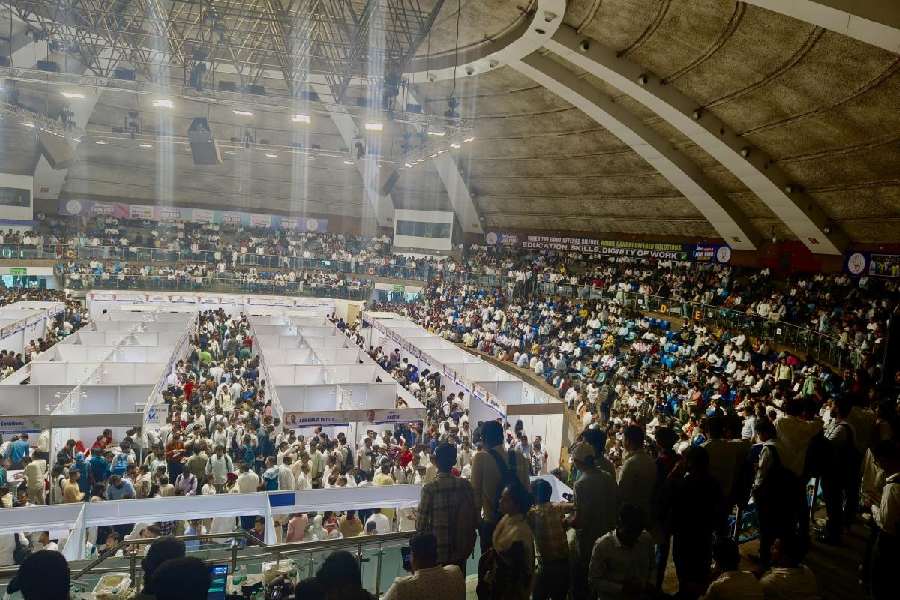 |
| Shamshad Begum |
Playback singer Shamshad Begum, known for mesmerising songs such as Saiyyan Dil Mein Aana Re and Leke Pehla Pehla Pyar that she sang with a distinctive nasal twang, died at her home in Mumbai on Tuesday evening. She was 94.
Shamshad was Bollywood’s leading singer before the rise of Lata Mangeshkar and Asha Bhosle and was known for her versatility.
“She could sing fun songs — like Mere Piya Gaye Rangoon and Aana Meri Jaan Sunday Ke Sunday — and melancholic songs with equal passion,” said music archivist Kushal Gopalka.
To illustrate how good a singer she was, Gopalka recalled an anecdote mentioned by Shamshad in an interview.
“Begum recalled that she and Mohammed Rafi were recording La De Mohe Balma Asmani Chudiyan for music director Ghulam Mohammed for the 1953 film Rail Ka Dibba. She was made to stand two feet away from the mike,” Gopalka said.
“The song had a 10-line stanza and they had to sing it in a single breath. While she pulled it off, Rafi could not. He touched her feet and said ‘Aapaji, aapko maan gaye (hats off to you)’.”
Her daughter Usha Ratra said on Wednesday: “She had not been well for the past few months and had been hospitalised recently. She passed away last night at our home (at Hiranandani Gardens in Powai). A few friends were present at the funeral.”
The singer, honoured with a Padma Bhushan in 2009, had been living with her daughter and son-in-law Col Yograj Ratra for several years. Her husband, lawyer Ganpat Lala Batto, died in an accident in 1955.
Born in Punjab on April 14, 1919, Shamshad received no formal music training and her father, Miyan Hussain Baksh, did not encourage her singing. But her uncle took her secretly to an audition with a music company that was conducted by legendary music director Master Ghulam Haider.
Shamshad made her playback debut in the Punjabi film Yamla Jat by Dilsukh Pancholi, whose score was composed by Haider, who became her mentor. She was brought to Mumbai by filmmaker Mehboob Khan, who travelled to Lahore and persuaded her father. Her song Babu Darogaji in Khan’s Taqdeer (1943), which introduced Nargis to the silver screen, became a hit.
After Partition, Haider moved to Pakistan but Shamshad continued to live and work in Mumbai and soon found a second mentor in Naushad.
“First Haider, then Naushad, and later O.P. Nayyar played key roles in Shamshad Begum’s career,” said Gopalka, who interviewed Shamshad for his book The Unsung Hero. “Although she worked with all music directors and was the reigning queen of playback singing in the ’40s and early ’50s, these three composers really understood her versatility.”
Naushad used her voice in many films, including Andaz, Mela, Aan, Mother India and Mughal-e-Azam. The hit qawwali Teri Mehfil Mein, a duet with Lata, was her last song for Naushad.
Shamshad later combined with O.P. Nayyar for some of her biggest hits like Kabhi Aar Kabhi Paar (Aar Paar), Ab To Jee Hone Laga (Mr and Mrs 55), and Kahin Pe Nigahen Kahin Pe Nishana, Boojh Mera Kya Naam Re and Leke Pehla Pehla Pyar (CID).










